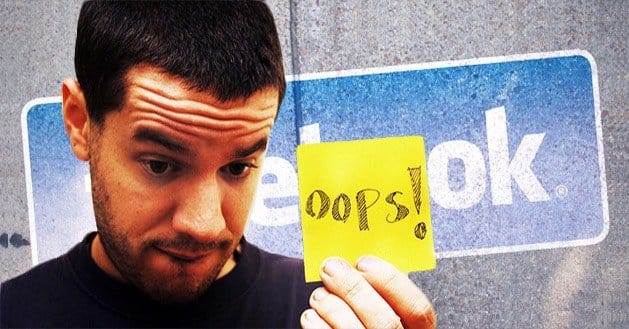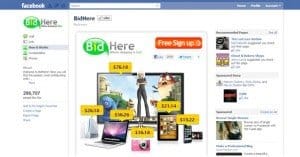 Written by ContentPowered.com
Written by ContentPowered.com
These days it seems as though there are as many businesses on Facebook as there are personal profiles. Even with the sheer amount of time the average user spends on Facebook, there’s a lot of competition for their limited attention.
If you want to compete in the realm of Facebook, you need to sway every factor in your favor. If you’re leaving stones unturned and things undone, you’re hurting yourself in the long run. Instead, make sure your page has everything it needs to succeed.
1. Branded Imagery
There are three places images will show up on your page. You need to make sure these are all working towards your goals.
- Your profile picture. This should ideally be your company logo. There’s nothing simpler or more branded than that. However, there are some exceptions. You can get creative with your logo and add additional content to the picture. You can customize it for current events or for holidays. You can even replace it entirely on a temporary basis with something featured from user submissions.
- Your cover photo. This is the huge banner across the top of your page. This should ideally tie in with your branding, though it doesn’t need a logo on it; it displays right next to your profile picture. Use this space more like a billboard to advertise new products or developments. Use it to feature customers satisfied with your product. Use it in any creative way that helps your overall message; just make sure to use it. Note: you need to keep yourself within the Facebook text-on-images guidelines. Minimal text is best.
- Your feed itself. This includes the images generated as previews of the content you post or images you post as the content themselves. These don’t necessarily need to be branded.
Images draw the eye and keep users interested. Make sure you’re making use of them to the fullest extent possible.
2. A Completed About Section
It may not seem important to have a fully fleshed out profile, but it really is. It’s one of the signs users on Facebook use to determine whether an account is legitimate or not. It wouldn’t be an issue if you were verified, but Facebook doesn’t make the verification process easy, and more likely than not a small business will not be able to receive the blue check right away. In the absence of verification, a profile is the next best thing.
- Use the first couple sentences as a hook; they’re all that display to a user who hasn’t expanded the description. Plug in a URL for your main homepage and a quick, punchy description of your business.
- Anything after that content is below the fold, so you can spend more time optimizing it for those readers who actually come to read more. A deeper description of your business is in order.
- Include links to your other social media profiles, including Twitter, Instagram, Google+, YouTube and any other sites you use actively.
- Make sure you include keywords relating to your business in the descriptions, including any common nicknames your business may have; users will find your business in search using this description.
3. A Custom URL
Which is more appealing to you?
- http://facebook.com/profile.php?fbid=38101028929471017472
- http://facebook.com/MyBusinessName
Obviously the second instance is much better. It’s trivially easy to get yourself a custom Facebook URL for your business. You just have to be aware of a few things first.
- Your URL needs to be unique and not taken previously. This can be a problem if your business name is too similar to another existing business.
- Your URL needs to be short and memorable. An acronym that has no meaning isn’t very useful. A long version of your name looks like you had to use it to get around name squatting or another, larger business.
- You can use a period (.) to get around some restrictions; other than that, you can only use letters and numbers, no symbols.
- You can only create a custom URL if your page has over 25 fans. This makes it harder to squat and steal custom names.
4. Custom Tabs
If you were to go to a high profile business page, such as that for Coca-Cola, you would see four boxes beneath the cover photo in the header, along the right side. These are Photos, Likes, Videos and the Coca-Cola Store. There’s also a drop-down arrow that, when clicked, shows you eight additional boxes.
These boxes are custom tabs. They are generated through an app on Facebook, and they give you a degree of customized content right at the top of your profile. You can use them like Coke does to display a store link, or you can have it link to your website, your app or any other content you want to advertise. To create one:
- Log in as a Facebook developer. Click to create a new app.
- Name your new app and give it a unique namespace, which is an ID used by Facebook to reference your tab.
- Fill in an image and basic information, including URL of the destination.
- Install the app on your page. You will need to jump through hooks with this url: http://www.facebook.com/dialog/pagetab?app_id=YOUR_APP_ID&next=YOUR_URL.
Alternatively, you can use one of the many third party applications to create your content and tab dynamically. Hubspot offers one, you can make one through Woobox and you can use ShortStack. These tools are useful in other ways as well, so consider investigating them.
5. Fresh Content
Everything above is just a framework, a skeleton. It’s all very pretty and very supportive, but it needs life to fill it out. That life is your content. You need to post content frequently, on a schedule. You need to post articles, images and videos your users want to see. You need to post the things that draw people to your business. This means a mixture of your own content and content in related industries that showcases your insight when you express an opinion.
An inactive page is a valueless page. Users click through and, if they see the most recent post was four months ago, they’re not going to follow you. Why should they, when you never post anything of value? Show them you’re worth following; post content.




